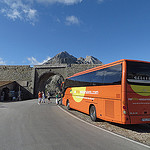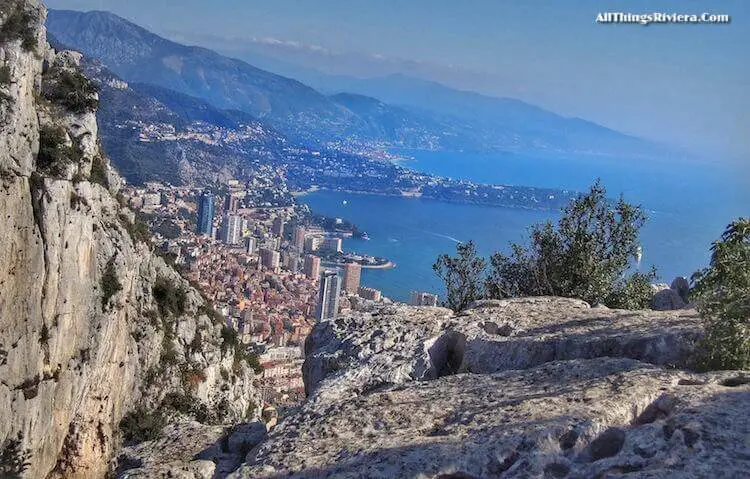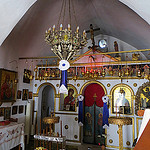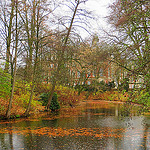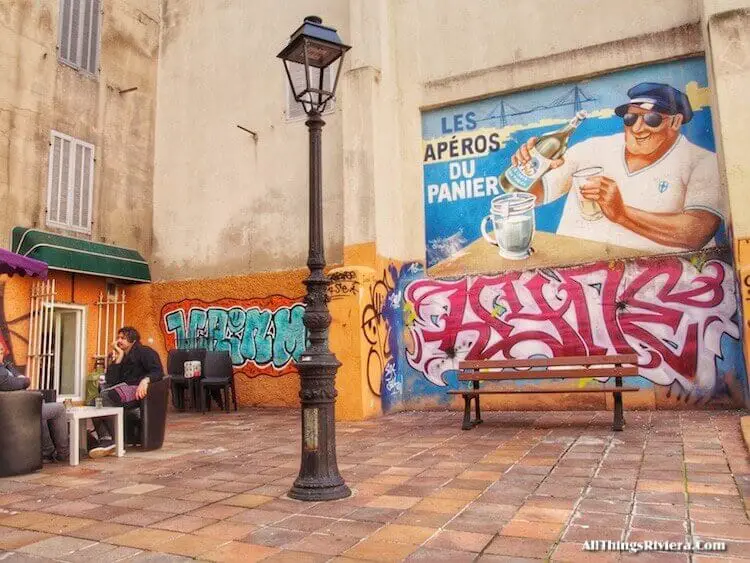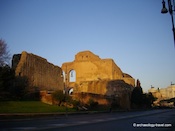Valencia is the third biggest city in Spain, but it is fair to say, I believe, that it struggles at times to be seen in the shadow that is cast by its two larger rivals. Valencia may lead the peloton, but in almost every field from football to film and fashion, Madrid and Barcelona are way ahead.
There is, however, one area in which Valencia has managed to outshine the country’s two megastars: sustainable tourism that is coupled with climate neutrality and a “fair as well as inclusive green transition” – to use the words of the EU Commission which rewarded Valencia for its efforts in this area with the title of “European Green Capital 2024”.
The project that best sums up its environmental ambitions is the Jardin de Turia in Valencia: Spain’s largest urban green space and longest urban garden walk – which, as a bonus, features something that even Madrid does not possess. (More of that later.)

The Turia is the river that used to pass by Valencia’s old town just outside its northernmost city gate, near enough to cause devastating floods for hundreds of years. In the last five centuries alone, 75 major floods have been recorded where at least one part of the town was under water.
Perhaps the most catastrophic inundation in Valencia’s history occurred in October 1957. Eighty one people died, 6000 homes were destroyed, and the entire city was without water and electricity for several days.
This was when the city’s patience with its river finally snapped and the decision was made to end the Turia’s destructive activities once and for all by rerouting the river to a course 10 kilometres outside the city limits. These works were completed in 1973.
But with one problem out of the way, another one was created: what was Valencia to do with all the reclaimed land of the ancient river bed? It took the city fathers several years to come up with an answer.
Eventually, they decided to build a city walkway that would follow the ancient course of the river, and in 1986, the Jardin de Turia in Valencia was opened.

The similarities with the Paillon project in Nice are obvious, at least for those Valencia visitors who are familiar with the southeastern corner of France (and to regular readers of our blog).
In both places, for example, water was chosen as a recurrent theme …

… but there are also important differences between the two. For one, the Valencia river walk is far longer and comprehensive, which allowed the landscaping engineers to integrate many existing green spaces into their design.
More crucially, the Paillon walkway in Nice follows the course of the river (which continues to flow underground) on the level of the streets above it. All of the old river crossings have therefore been leveled – whereas in Valencia, the walkway was laid out on the dried-out river bed, and all 18 bridges over the Turia remain in place.
Some of these bridges are more than 500 years old and highlight the urban history that is linked to the river, …

… while others celebrate the present …

… or point to the future.

The walkway starts in the northwest of Valencia and ends near the harbour in the southeast. It has a total length of 9 kilometres, but one must bear in mind that the Jardin de Turia in Valencia was not meant to be enjoyed by wolfing down in one piece. Instead, locals and visitors alike are encouraged to follow a “dip in, dip out” approach.
For a shorter walk in this spirit, which will nevertheless give you a flavour of the entire design, we suggest you start from the Pont d’Arago at roughly the walk’s half-way point.
If you are coming from the town centre (in the west), descend and turn right to sample the fauna …

… as well as the numerous ornamental features.

You will also pass some of the Turia’s most famous spots and landmark features, including the Parc Gulliver – a play structure in the shape of a giant’s body designed for “Lilliputian” children – and the Palau de la Musica, the city’s main auditorium for classical music.

Above all, however, this route will lead you to the highlight and crowning glory of the entire gardens: the City of the Arts and Sciences.

The Ciudad de las Artes y Ciencias was originally conceived – with a science museum, a planetarium and an aquarium – as a Spanish counterpart to the Parisian Cite des Sciences et de l’Industrie, but over time, it has become much, much more.
For one, some cultural buildings – such as an opera house – were added to the City (hence its extended name), but even if you have no pronounced interest in either the sciences or the musical theatre, there is much to enjoy there: it is the futuristic landscape itself which is the star of the show.

Parts of this landscape may look oddly familiar to you: the complex has been used many times as a scenic backdrop for science fiction films and TV series (including the BBC’s Doctor Who).
The City of the Arts and Sciences was masterminded by the world-famous architect Santiago Calatrava, a native of Valencia. Building works started in 1996, and the individual structures were completed one by one over thirteen years, starting in 1998 with the Hemisferic, the eye-shaped planetarium, …

… and finishing, for now (plans for a further extension are officially “on hold”), with the Assut de l’Or bridge – Calatrava’s signature piece – and the Agora just behind it.

In 2007, the Ciudad received the ultimate accolade when it was chosen – in a nationwide public vote – as one of the 12 Treasures Of Spain, alongside other world-famous sites such as the Altamira cave paintings and Barcelona’s Sagrada Familia. Not all major towns in Spain can boast the honour of accommodating such a “Treasure” – most notably, even Madrid was passed over.
More importantly, however: the City of Arts and Sciences is a unique project, and nothing to rival it exists elsewhere in Europe.
As a general rule in travelling, you should always go to search out the unique and the original, something that you cannot find anywhere else.
Which means that, even if you do not have the time for a walk in the Turia Gardens, you should take a bus or a metro (nearest station: Alameda) for a trip like no other.
Chances for such experiences, after all, do not come around every day.


